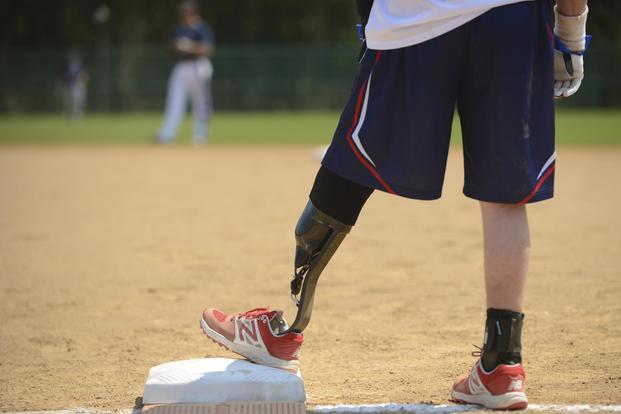While the military pursues the use of artificial intelligence to design autonomous systems and build better weapons systems, some combat-wounded veterans are using the technology to control prosthetics that can take commands and learn over time.
At the Association of the United States Army annual meeting Monday, Glen Lehman, a former Army sergeant first class, demonstrated how a system built by Coapt Engineering could help him control his prosthetic right arm more naturally and with less muscle strain than other neural-controlled prosthetic devices. Lehman lost his arm during a 2008 deployment to Iraq.
Use of more capable prosthetics has grown in recent years, but Lehman explained that many of them have a more limited set of movement options and are actually quite tiresome for the user.
To get the arm to move, the wearer must flex a muscle to reach a command threshold, and muscle exhaustion is a danger.
Coapt's system, on the other hand, can learn to respond to different commands as requested.
"With Coapt, as long as you can replicate or create a pattern, the algorithm assigns it to a motor movement," Lehman said.
"As I get weaker through the day, I can retrain the threshold and I can bring the bar lower so I don't have to go so far," he said. "It also reduces my dependency on a clinician because I can train the thresholds on the arm myself."
Blair Lock, CEO of Coapt Engineering, said the science behind the system is known as "pattern recognition myoelectric control."
Sensors on the surface of the skin, he said, pick up the electrical signals caused by muscle contractions.
While the system is easy to learn to operate, he said real-time algorithms actually allowed it to improve over time.
"It learns Glen. The more he wears it, the better this system gets at listening and functioning for him," Lock said. "It provides a level of intuitive and superior control."
Lehman was the second person to use the system in 2013, Lock said, and now about 15 percent of Coapt's business serves combat-wounded troops, with roughly 45 wounded warriors having received the system to date.
The company is developing sensors that can be placed under the skin for more accurate commands, and adapting the system to power leg prosthetics, he said.
-- Hope Hodge Seck can be reached at hope.seck@military.com. Follow her on Twitter at @HopeSeck.





























